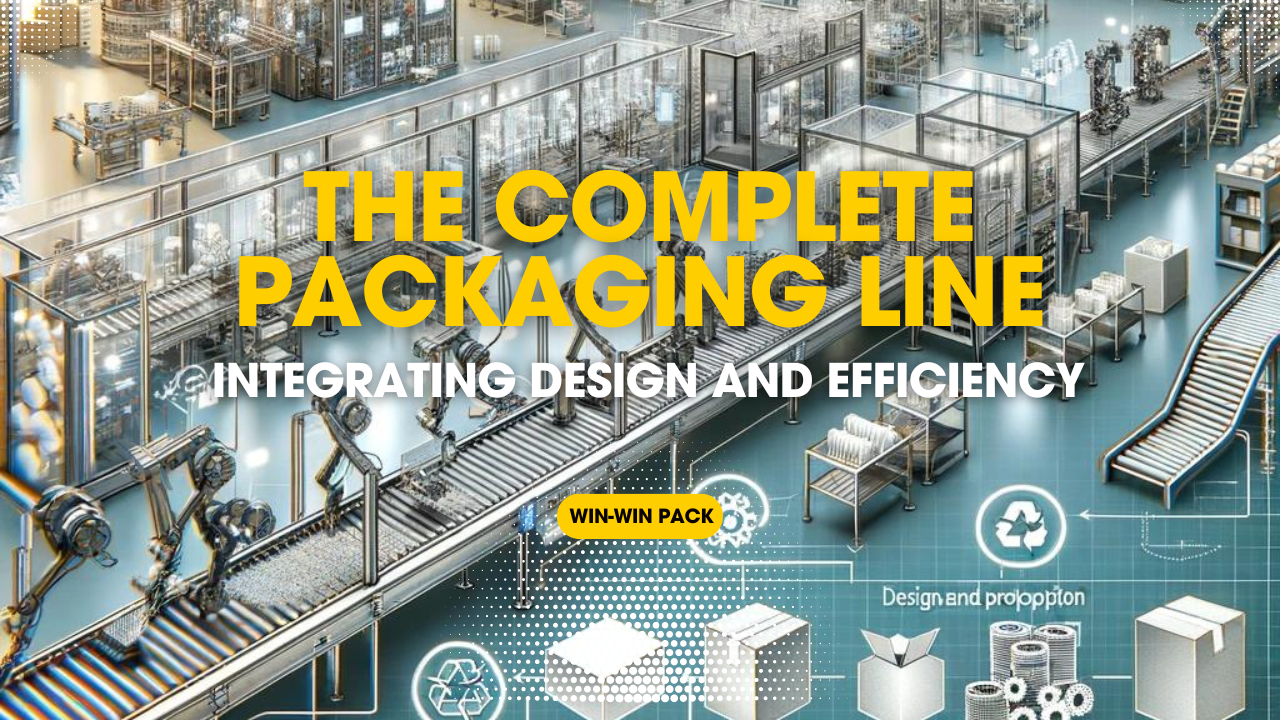The Complete Packaging Line: Integrating Design and Efficiency
2024-06-05

The Complete Packaging Line: Integrating Design and Efficiency
In today's fast-paced manufacturing environment, efficiency and innovation are paramount. The complete packaging line, encompassing everything from initial design to the final packaging process, plays a crucial role in ensuring that products reach consumers in optimal condition. This comprehensive approach not only enhances productivity but also addresses key aspects such as sustainability, cost-effectiveness, and consumer satisfaction.
Concept of a Complete Packaging Line
A complete packaging line integrates various stages of the packaging process into a seamless, efficient system. It includes the following key components:
Design and Prototyping: The initial phase involves creating packaging designs that are functional, aesthetically pleasing, and tailored to the product's requirements. Prototyping allows for testing and refinement before full-scale production.
Material Selection: Choosing the right materials is crucial for protecting the product, minimizing environmental impact, and optimizing costs. This includes considering factors like durability, recyclability, and cost-effectiveness.
Primary Packaging: This step involves the immediate containment of the product, such as bottles, cans, or pouches. It ensures the product's safety and integrity during storage and transportation.
Secondary Packaging: Secondary packaging groups primary packages together for easier handling and distribution. Examples include cartons, boxes, and shrink wraps.
Tertiary Packaging: This final layer is used for bulk handling and transport, such as pallets and large shipping containers, ensuring the products reach their destination intact.
Design Principles in Packaging
Effective packaging design goes beyond aesthetics. It involves a holistic approach that considers functionality, sustainability, and consumer experience. Key design principles include:
Functionality: The packaging must protect the product, be easy to use, and facilitate efficient storage and transportation. Functional design reduces waste and enhances the overall user experience.
Sustainability: With growing environmental concerns, sustainable packaging has become a priority. This involves using eco-friendly materials, reducing packaging waste, and designing for recyclability.
Cost-Effectiveness: Balancing quality and cost is essential. Efficient use of materials and innovative design can significantly reduce packaging costs without compromising on quality.
Branding and Marketing: Packaging serves as a powerful marketing tool. It should reflect the brand's identity, attract consumers, and provide essential product information clearly and effectively.
Importance of a Complete Packaging Line
Implementing a complete packaging line offers numerous benefits:
Increased Efficiency: Streamlining the packaging process reduces production time and labor costs. Automated systems and integrated workflows enhance overall efficiency.
Improved Product Quality: A well-designed packaging line ensures that products are consistently packaged to high standards, reducing the risk of damage and spoilage.
Sustainability: Efficient packaging lines can incorporate sustainable practices, reducing environmental impact and meeting consumer demand for eco-friendly products.
Cost Savings: By optimizing materials and processes, companies can achieve significant cost savings, enhancing their competitive edge in the market.
Enhanced Consumer Satisfaction: High-quality, well-designed packaging improves the consumer experience, leading to increased brand loyalty and repeat purchases.
The complete packaging line is an essential component of modern manufacturing, integrating design, functionality, and efficiency to deliver high-quality products to consumers. By adopting innovative design principles and optimizing the packaging process, companies can achieve greater sustainability, cost savings, and consumer satisfaction. In an ever-evolving market, a well-executed packaging strategy is a vital element of success.